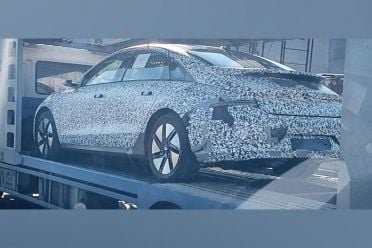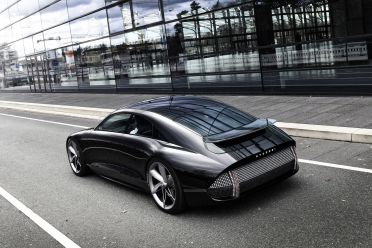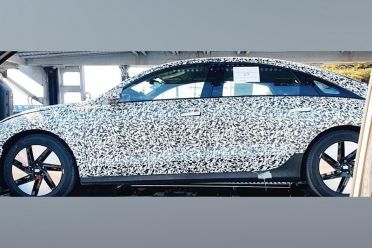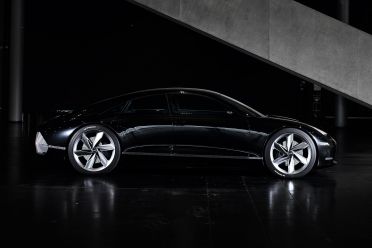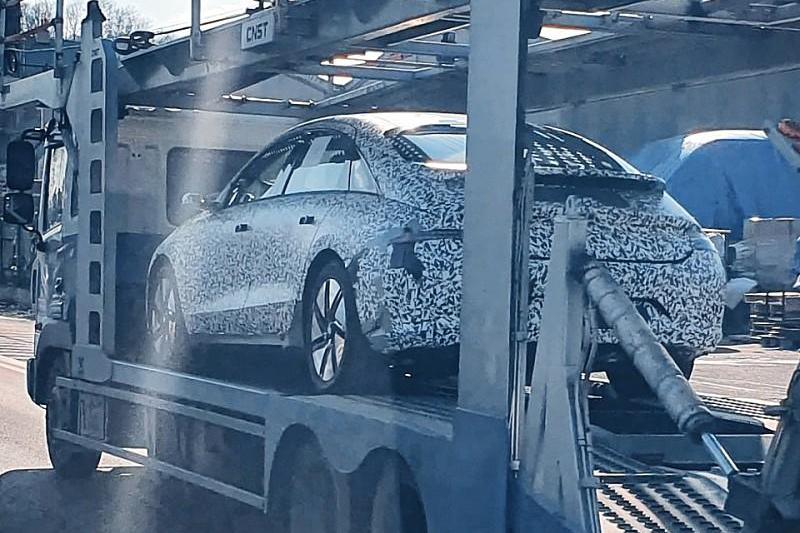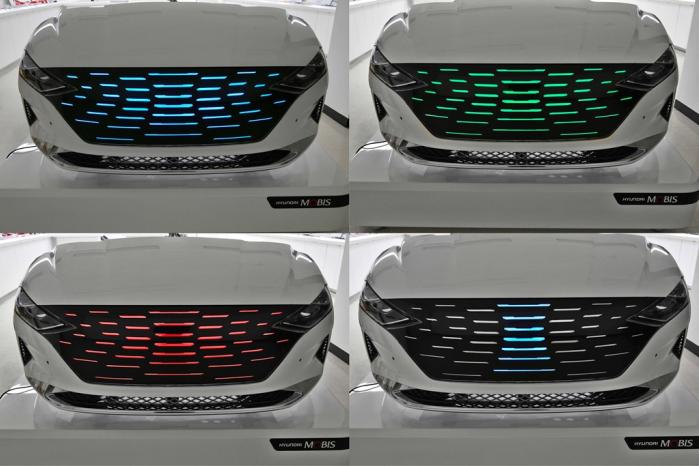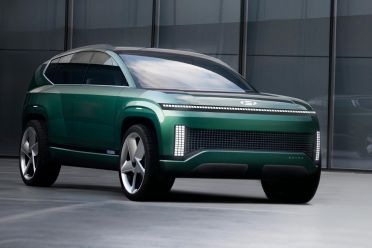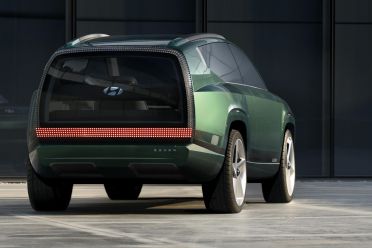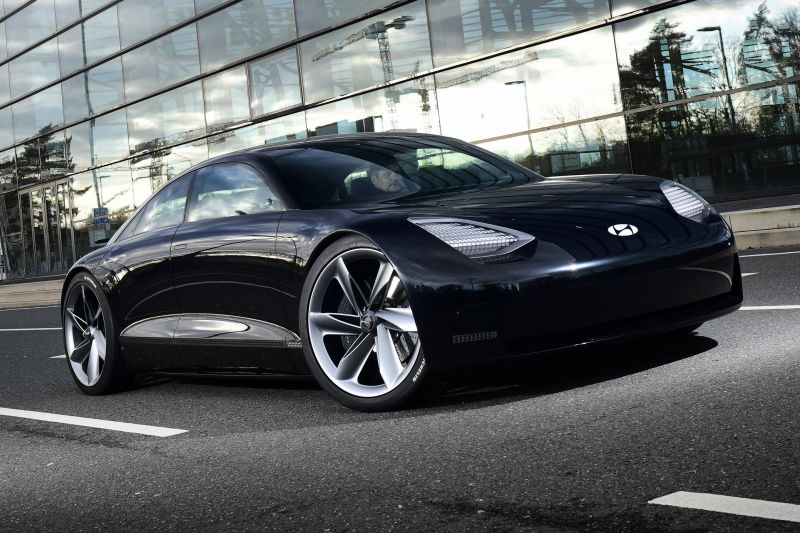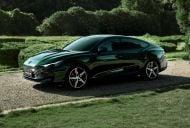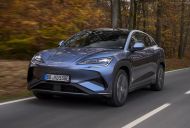The Hyundai Ioniq 5 made the journey from concept to production virtually unscathed, and its slinky Ioniq 6 sibling looks set to follow suit – mostly.
Photos shared on the Bobaedream forum reveal what appears to be the production model, albeit still covered in camouflage.
Its svelte, curvaceous styling is similar to that of the 2020 Prophecy concept, although there are some concessions to production like actual door handles, normal-sized wheels, and more conventional bumpers.
The latter change also appears to have seen the tail lights move further up on the rear fascia.
The Prophecy concept had an unusual, full-width cut-out filled with Hyundai’s Parametric Pixels, as seen on the Ioniq 5, with illuminated portions contained within.
The spied model appears to have shifted to slim, horizontal tail lights on a still sloping rear end, with shades of the Mercedes-AMG GT 4-Door Coupe.
Previous spy photos have shown the Ioniq 6’s front bears a closer resemblance to that of the Prophecy concept.
Overall, however, the Ioniq 6’s low, sporty silhouette and abundance of curves are pure Prophecy, and stand in stark contrast with the angular, retro-futuristic Ioniq 5 with which it shares its E-GMP electric platform.
A report from The Korea Economic Daily last year said the Ioniq 6 was still set for a 2022 introduction, albeit one delayed by 2-3 months as Hyundai makes the four-door coupe slightly longer and gives it slightly more range.
It has reportedly been stretched 20mm, making it as long as Hyundai’s full-sized Grandeur sedan, which isn’t sold here, at 4990mm.
The Ioniq 6 will reportedly gain the 77.4kWh battery found in up-level Kia EV6 variants instead of the 72.6kWh battery found in the related Hyundai Ioniq 5.
An earlier Carscoops report said the Ioniq 6 would offer a choice of 160kW single-motor and 230kW dual-motor powertrains, with Hyundai targeting a range in excess of 483km.
The Ioniq 5 tops out at 480km in long-range, single-motor guise and the EV6 offers up to 510km, though the Ioniq 6 is lower and therefore may be slipperier.
The Korea Economic Daily also reported the Ioniq 6 will come with a “lighting grille”, an automotive-first that will allow drivers to use the grille as a LED lighting device.
Developed by its parts arm Hyundai Mobis, the grille can change colour to indicate it’s charging, there’s an emergency, or the vehicle is in autonomous driving mode, among other scenarios.
Following the Ioniq 6 will be the Ioniq 7, due in 2024 and previewed by last year’s Seven concept.
It’s a large, Palisade-sized SUV which will reportedly offer a choice of six- or seven-seat configurations.
It’s expected to follow suit in offering a dual-motor all-wheel drive set-up with 230kW of power, and will reportedly use a 100kWh battery pack with a targeted range of more than 483km.
The three Ioniq models all use the new, dedicated E-GMP electric vehicle architecture.
This also underpins the Kia EV6 and a range of future Kia products, as well as the Genesis GV60.
Hyundai has committed to reducing its 2019 carbon emission levels by 75 per cent by 2040, with the target of zero carbon emissions by 2045.
By 2030, Hyundai aims for 30 per cent of its global vehicle sales to be from zero-emission vehicles. By 2040, it wants zero-emissions vehicles to account for 80 per cent of total sales.

